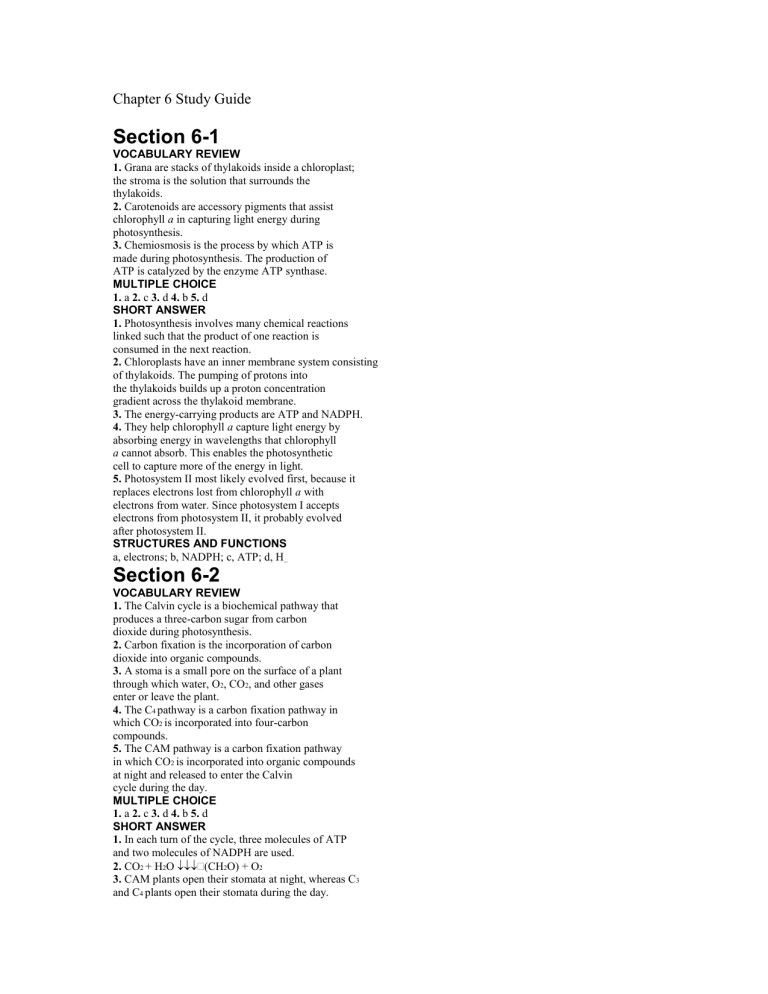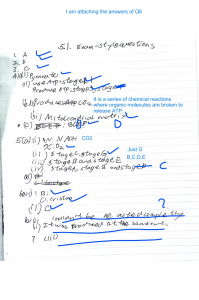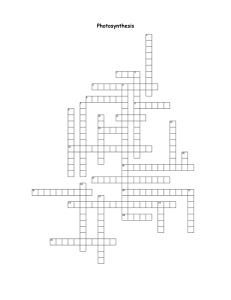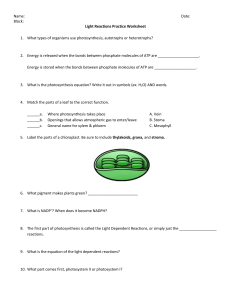
Chapter 6 Study Guide Section 6-1 VOCABULARY REVIEW 1. Grana are stacks of thylakoids inside a chloroplast; the stroma is the solution that surrounds the thylakoids. 2. Carotenoids are accessory pigments that assist chlorophyll a in capturing light energy during photosynthesis. 3. Chemiosmosis is the process by which ATP is made during photosynthesis. The production of ATP is catalyzed by the enzyme ATP synthase. MULTIPLE CHOICE 1. a 2. c 3. d 4. b 5. d SHORT ANSWER 1. Photosynthesis involves many chemical reactions linked such that the product of one reaction is consumed in the next reaction. 2. Chloroplasts have an inner membrane system consisting of thylakoids. The pumping of protons into the thylakoids builds up a proton concentration gradient across the thylakoid membrane. 3. The energy-carrying products are ATP and NADPH. 4. They help chlorophyll a capture light energy by absorbing energy in wavelengths that chlorophyll a cannot absorb. This enables the photosynthetic cell to capture more of the energy in light. 5. Photosystem II most likely evolved first, because it replaces electrons lost from chlorophyll a with electrons from water. Since photosystem I accepts electrons from photosystem II, it probably evolved after photosystem II. STRUCTURES AND FUNCTIONS a, electrons; b, NADPH; c, ATP; d, H_ Section 6-2 VOCABULARY REVIEW 1. The Calvin cycle is a biochemical pathway that produces a three-carbon sugar from carbon dioxide during photosynthesis. 2. Carbon fixation is the incorporation of carbon dioxide into organic compounds. 3. A stoma is a small pore on the surface of a plant through which water, O2, CO2, and other gases enter or leave the plant. 4. The C4 pathway is a carbon fixation pathway in which CO2 is incorporated into four-carbon compounds. 5. The CAM pathway is a carbon fixation pathway in which CO2 is incorporated into organic compounds at night and released to enter the Calvin cycle during the day. MULTIPLE CHOICE 1. a 2. c 3. d 4. b 5. d SHORT ANSWER 1. In each turn of the cycle, three molecules of ATP and two molecules of NADPH are used. 2. CO2 + H2O (CH2O) + O2 3. CAM plants open their stomata at night, whereas C3 and C4 plants open their stomata during the day. 4. Increasing the temperature initially accelerates the various chemical reactions involved in photosynthesis. At higher temperatures, many of the enzymes that catalyze these reactions become ineffective, and the stomata begin to close. 5. The stomata would open. That would allow more CO2 to enter the leaf from the surrounding air, stimulating photosynthesis. STRUCTURES AND FUNCTIONS Clockwise from the top: 3 CO2, 6 3-PGA, 6 ATP, 6 ADP, 6 NADPH, 6 NADP_, 6 G3P, 3 ATP, 3 ADP, 3 RuBP light energy




